
詩集『紅・くれない』32ページ版
有料と書かれていますが、基本的に無料で全部読めます。今後の福島取材、制作活動のため、投げ銭をしていただけると嬉しいです。
・・・・・
2019年制作、全32P/鈴木邦弘個展「紅・くれない」(岡山県津山市、Nishilma25)、「偽り〜RESTORATION FUKUSHIMA」(千駄ヶ谷、Gallery BOBBIN)出展作品。
『紅』
"KURENAI"
作・絵:鈴木邦弘/英訳協力:FoE Japan
まえがき
2011年3月11日、東日本大震災が発生、巨大な地震と津波に襲われた福島第一核発電所が爆発した。大量の核物質が放出され、震災から9年が経とうとする今も、それは続いている。
日本政府は、それまでの基準を20倍に引き上げ、強引に帰還政策を進めているが、帰る人は今も少なく、周辺の町はひっそりと佇んでいる。
核災害に伴う避難によって地域のつながりは分断され、また、その後も2020東京五輪に向けた辻褄合わせで、様々な線引きが為され、福島の人々は今も切り刻まれ続けている。
(この作品では、便宜上、「原子力」を「核」と表記する)
Foreword
On March 11, 2011, a magnitude-9 earthquake and subsequent tsunami hit the Eastern Coast of Japan, which triggered the nuclear core meltdown of the Fukushima Daiichi Nuclear Power Plant. This is known as the Triple Disasters of 3.11. Even now, nine years later, the damaged power plants are continually releasing massive amounts of radioactive materials.
The Japanese government has changed the radiation safety standards. Restrictions of radiation exposure to residence was loosened to 20 times than before the disaster. The government has forcefully carried out repatriation policies for us to return home despite high levels of radiation contamination in the area. Few people have returned home. Once lively towns are now silent.
Inconsistency in evacuation policy after the nuclear disaster has left many local communities divided. In the name of the Olympic games, the government placed numerous policies in arbitrary manner, and as a result the people of Fukushima are left in pieces.

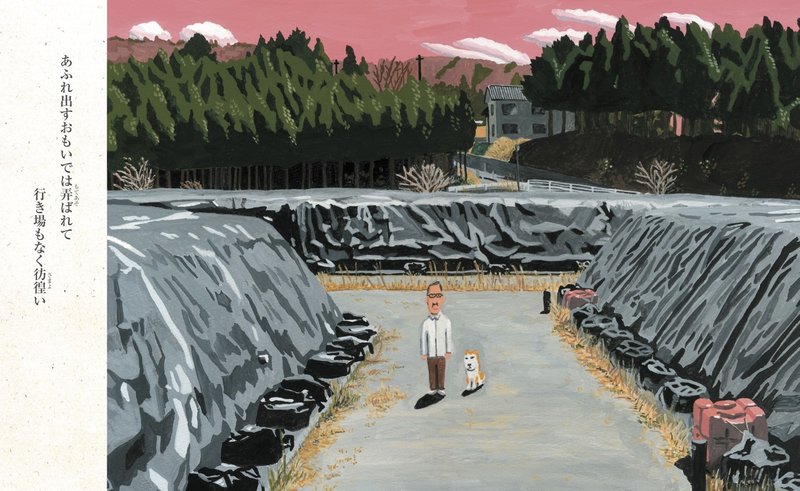
あふれ出すおもいでは弄ばれて 行き場もなく彷徨い
Overflowing memories were fiddled bluntly and drifting apart with nowhere to go
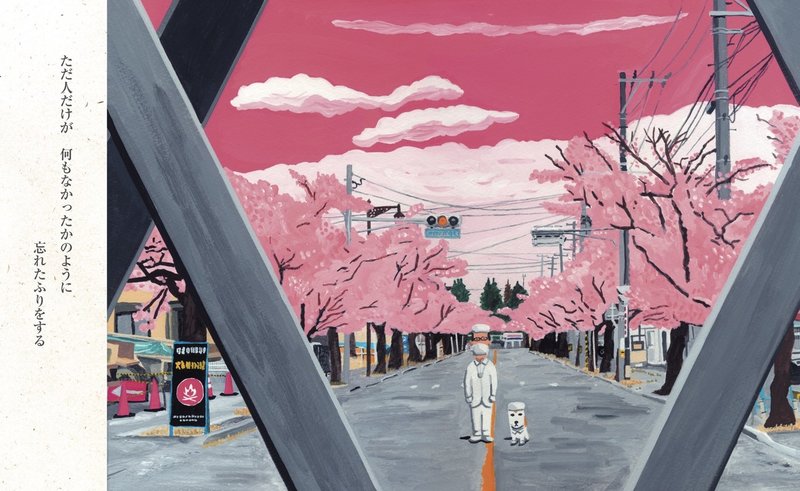
ただ人だけが 何もなかったかのように 忘れたふりをする
Only people continue on as if nothing happened
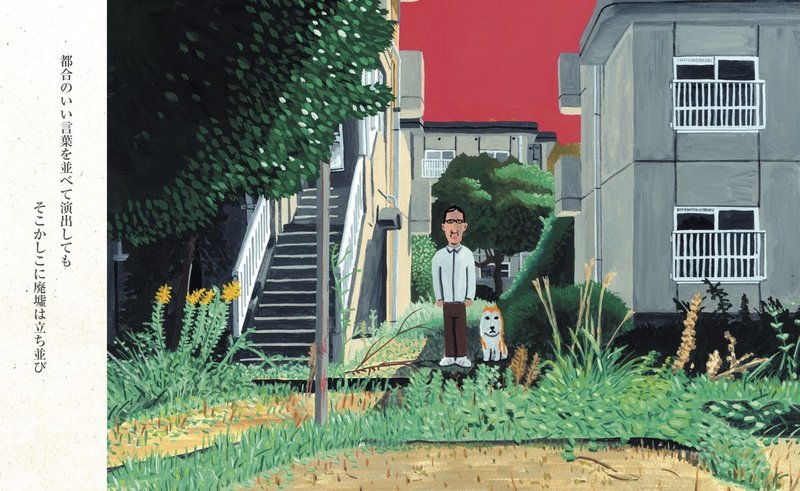
都合のいい言葉を並べて演出しても そこかしこに廃墟は立ち並び
Convenient excuses alone cannot refill abandoned houses

美しき花とフレコンバッグのコントラストは より一層 虚しさを呼び覚ます
Beautiful flowers painfully contrast with flexible container bags*, echoing hollowness
* Flexible container bags contain contaminated materials.
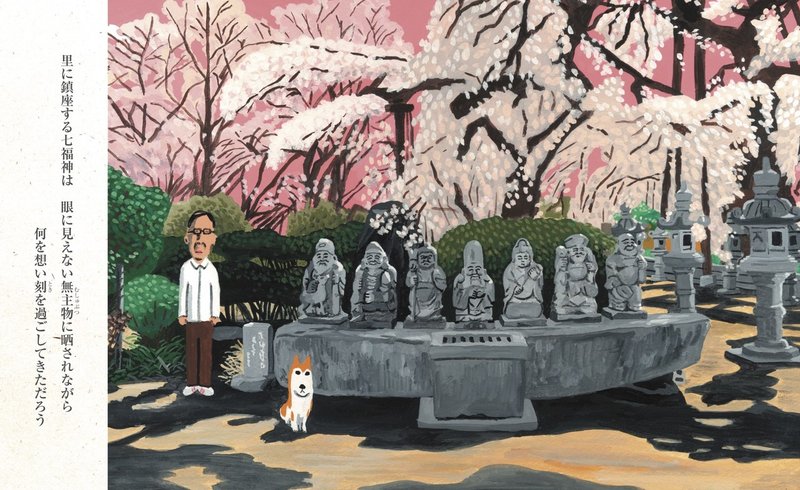
里に鎮座する七福神は 眼に見えない無主物に晒されながら 何を想い刻を過ごしてきただろう
Exposed to Mushubutsu*, what have the Seven Gods of Fortune witnessed, and what have they pondered?
*TEPCO claims that fallen-out radioactive materials belong to no one (Mushubutsu) and thus they are not responsible for it.
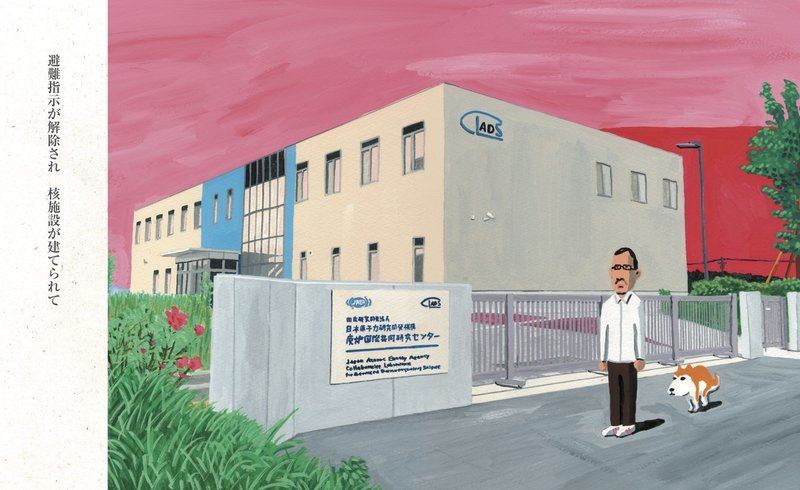
避難指示が解除され 核施設が建てられて
Evacuation orders have been lifted, and new nuclear facilities appear
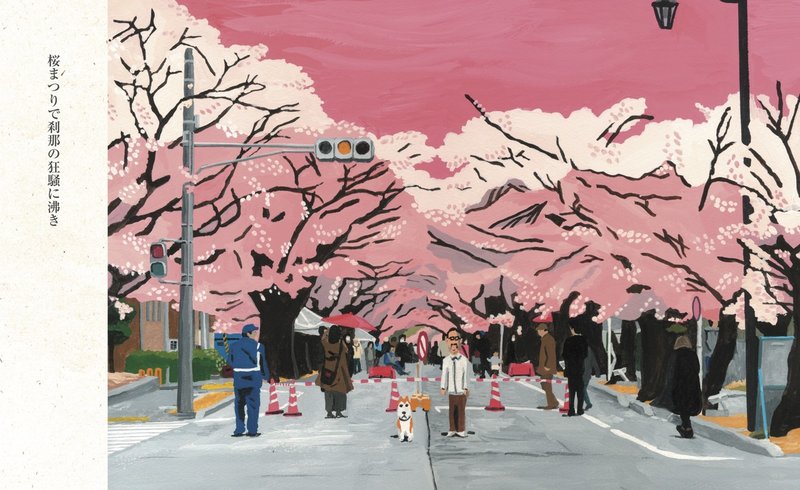
桜まつりで刹那の狂騒に沸き
Cherry blossom festivals bring momentary liveliness

子供らのいない集落は朽ちてゆく
While childless villages are left to decay
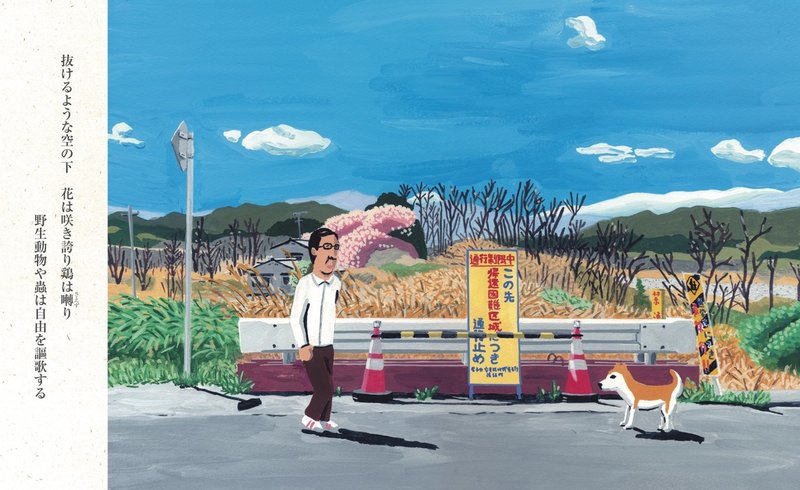
抜けるような空の下 花は咲き誇り鳥は囀り 野生動物や蟲は自由を謳歌する
Under a clear blue sky, flowers flourish, birds squeal, wild animals and insects rejoice freedom
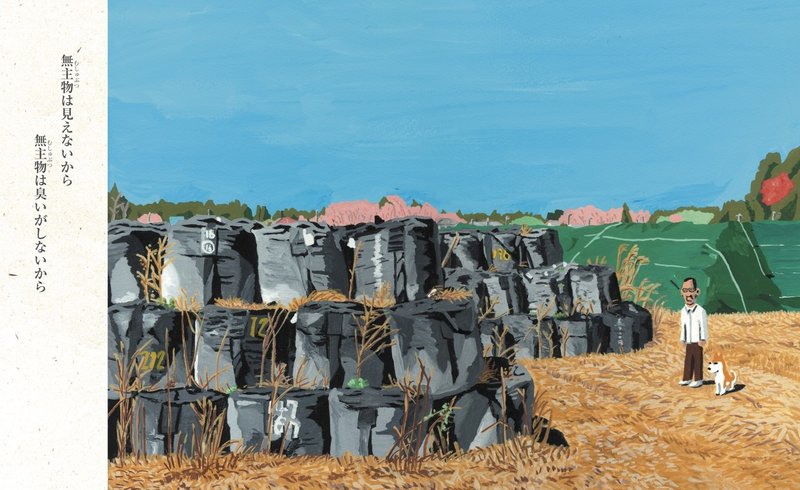
無主物は見えないから 無主物は臭いがしないから
Because Mushubutsu is invisible, Because Mushubutsu is odorless
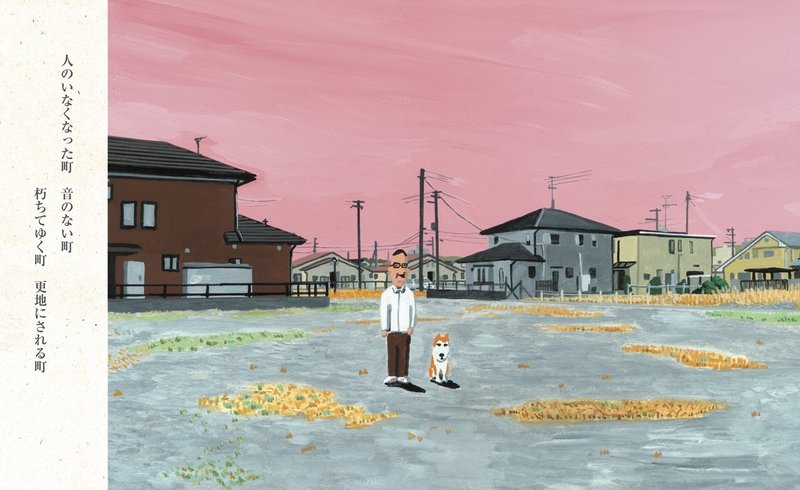
人のいなくなった町 音のない町 朽ちてゆく町 更地にされる町
Villages with no more people, Villages with no sound, Villages left to decay, Villages to be abandoned
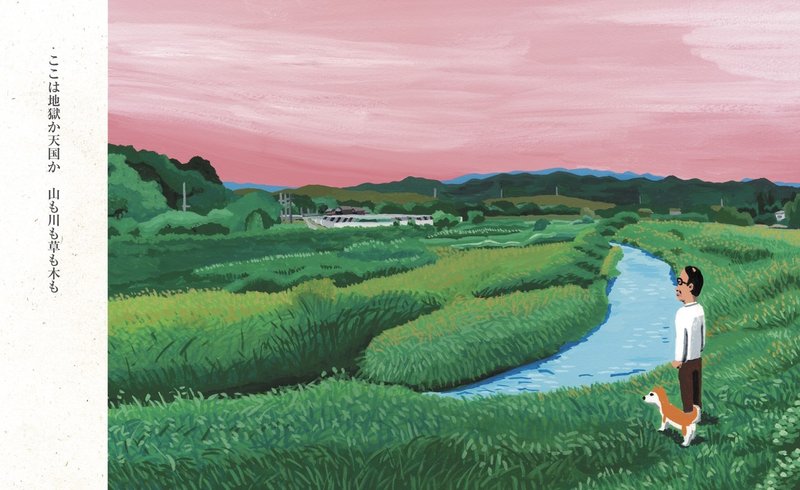
ここは地獄か天国か 山も川も草も木も
Is this heaven or hell? Mountains, rivers, grass and trees

ただ 町なかに 人だけがいない
Only people are missing here
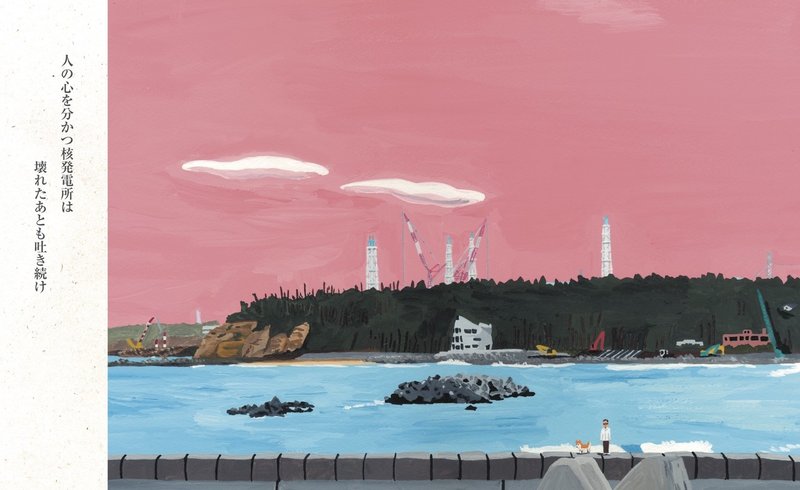
人の心を分かつ核発電所は 壊れたあとも吐き続け
The broken nuclear plants that once tore so many hearts, continue puffing out fumes
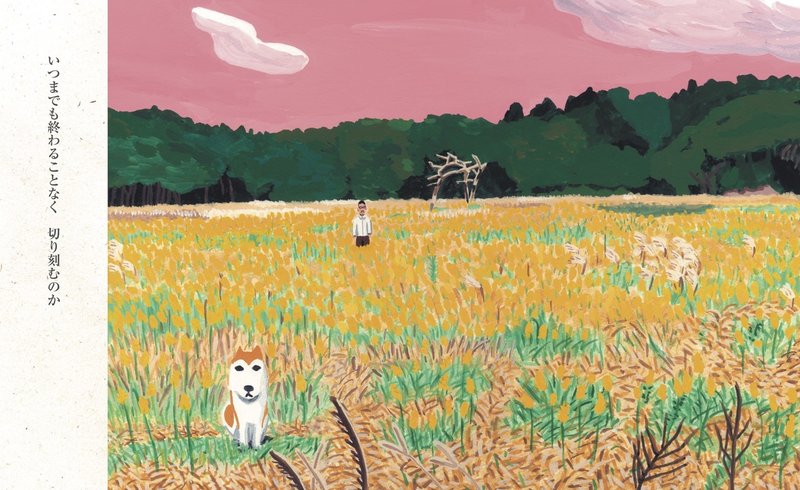
いつまでも終わることなく 切り刻むのか
Will it continue to tear us apart?
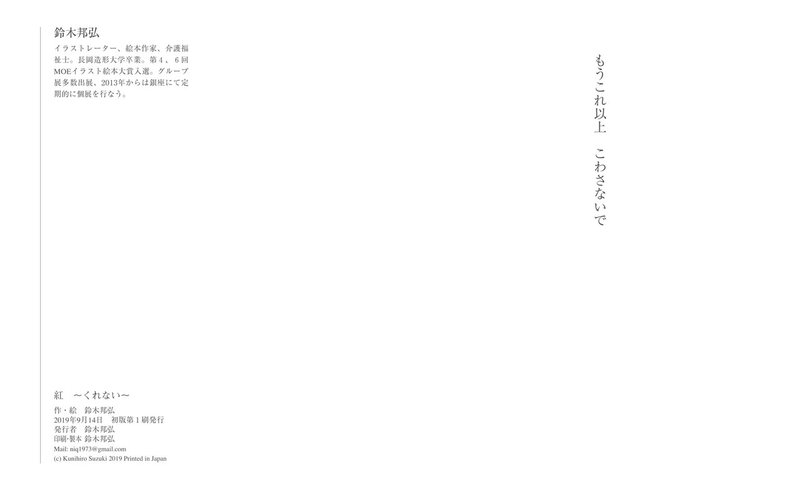
もうこれ以上 こわさないで
Please, no more.
・・・・・
あとがき
この作品を描こうと思ったきっかけは、19年4月、富岡町の桜まつりに行ったことだった。毎時0.2〜0.7μSv、一本隣の道に行けば毎時1.0μSv、そしてバリケードによって分断された桜並木。そんな場所で、小さな子供から老夫婦、ペットまでたくさんの笑顔が溢れ、しかしその一方で眉間にしわを寄せながらバリケードの向こうを見つめる人がいる。
近くの中学校の校庭ではたくさんの出店が並び、中には日本原子力研究開発機構のブースまであった。そんな祭りが行われているすぐ脇には、震災直後のまま、2011年3月の卒業式の準備がされたまま刻が止まった体育館があった。そんなカオスな町をひとり歩きながら、「空を真っ赤に染めてしまえ」と僕は思った。
復興五輪と名付けられた東京五輪で、福島県知事は「光と陰を世界に示す」という。しかし聖火リレーのルートをはじめ、どこで「陰」が紹介されているだろうか。
絆、頑張ろう、元気です、そんなキラキラした言葉の陰で、今も避難している数万の人々や帰還を果たしながらも痛みを感じている人々のことを置き去りにしてないだろうか。
多くの人々が忘れかけているであろう福島の陰の部分、核災害によってもたらされた負の側面を、僕はこれからも描いて伝え続けていこうと思う。メルトダウンした福島第一核発電所の“廃炉”など、おそらく僕が生きている間は不可能なのだから。
Afterword
I got the idea of this book in April 2019, when I was on my way to a cherry blossom festival in Tomioka Town, Fukushima. The airborne radiation level of a street was 0.2~0.7 μSv, and the next street was 1.0μSv. The barricade divided the cherry blossom street. There were young children and elderly couples, families with their pets, full of smiles and happiness. But at the same time, there were those who worryingly gazed out beyond the barricade.
There were many street vendors lined up in the nearby middle school playground for the festival. There was even an informational booth from the Japan Atomic Energy Agency (JAEA). Next to the ground, there was a gymnasium. The gymnasium was left there as if frozen in time, in preparation for the graduation ceremony right before the earthquake hit. As I was walking through this chaotic town alone, I thought to myself, “I wish the sky would turn red.”
The 2020 Tokyo Olympics and Paralympics have also been called the “Recovery Olympics.” The governor of Fukushima has asserted that he will show the world “the light and the darkness” of Fukushima. But how is the “dark” side of Fukushima going to be revealed? To name one, the route of the torch relay seems to imply otherwise.
While chanting such optimistic terms like "ties" (kizuna), “Cheer up!” (ganbarou), “I’m doing well” (genkidesu), aren’t we trying to look away from tens of thousands of evacuees or those who have returned only to face a life of sorrow and pain?
As many people have begun to forget about the “darkness” in Fukushima, I feel obliged to keep drawing about it. Perhaps, the decommissioning of the reactors won’t be completed in my life time.

・・・・・
以下も併せて見ていただけると嬉しく思います。
ここから先は
¥ 100
サポートしていただけると大変ありがたいです。いただいたサポートは今後の取材活動や制作活動等に使わせていただきます。よろしくお願いします!
